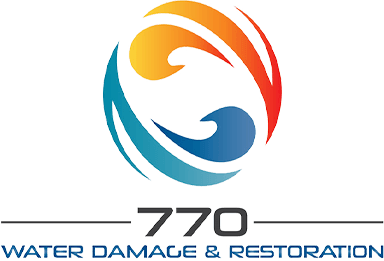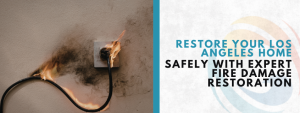When disaster strikes and water damage invades your home, the aftermath can feel overwhelming. As a homeowner, you might wonder, “How long will this restoration project take?” Understanding restoration project durations can help you manage expectations and prepare for what’s ahead.
In a building envelope restoration project, effective monitoring is essential for success. In Studio City, unique environmental factors make it vital to track progress, quality, and the restoration’s impact on the building’s structure and systems. Monitoring also evaluates ecological considerations, ensuring sustainability and minimal environmental harm. By integrating comprehensive oversight, project managers can identify issues early, maintain quality standards, and meet objectives efficiently. Proper monitoring helps control restoration project durations, keeping timelines realistic and costs manageable. This proactive approach safeguards the building’s integrity while preserving the surrounding environment, ensuring a durable and eco-conscious restoration outcome.
From the initial assessment to the final touches, restoration project durations can vary based on the extent of the damage and the type of repairs needed. Open communication with your restoration team and a well-planned timeline are essential in reducing stress and ensuring that the restoration process is both efficient and effective. By focusing on these critical elements, you can help ensure that your home is restored to its original state as quickly as possible, with minimal disruption to your daily life.
What to Expect After Water Damage
When you’re faced with significant water damage, the restoration process typically involves several stages, including assessment, mitigation, drying, restoration, and final repairs. Understanding typical restoration project durations for each stage can help you better plan and set expectations, as timelines often vary depending on the extent of the damage and the size of your home.
Assessment (1–2 hours): The restoration process begins with a thorough inspection of all affected areas. Professionals look for both visible and hidden damage, such as soaked insulation, warped materials, or structural weaknesses. This detailed evaluation helps determine safety risks and provides an accurate plan for the work ahead, including a realistic timeline and budget.
Mitigation (24–48 hours): In Studio City, immediate steps are crucial to stop ongoing water intrusion. This involves repairing leaks, sealing entry points, and extracting standing water with pumps and vacuums. Acting quickly limits water spread, protects structural elements, and prevents secondary damage like mold. Prompt mitigation also helps control restoration project durations, ensuring the process stays efficient, cost-effective, and on schedule for a faster return to safe, livable conditions.
Drying (3–7 days): Industrial-grade fans and dehumidifiers are set up to thoroughly dry walls, floors, and furnishings. Proper ventilation and continuous moisture monitoring are essential to avoid mold growth and preserve the structural integrity of the property.
Restoration Work: After the property is completely dry, crews focus on repairs and cleaning. This phase may include replacing damaged drywall, restoring flooring, repainting, and repairing electrical or plumbing systems.
Timeline Variability: Minor restoration may finish within a week, but severe structural damage or major rebuilding can extend the timeline to several weeks, depending on project complexity.
How to Prepare for the Restoration Process
If you need a restoration project in Studio City, proper preparation is key. Hire experienced professionals, gather insurance documents, and plan ahead. Knowing typical restoration project durations helps set realistic expectations. Early preparation ensures smoother workflows, controlled costs, and a timely recovery of your property with minimal stress.
- Document Everything: Take photos of the damage for insurance claims and keep records of all communications with your restoration company.
- Pack and Store Belongings: If your home is severely damaged, pack up your items. This can ease the process and often speed up the restoration.
- Establish Clear Communication: Work closely with your restoration team and ask questions about the timeline and steps involved in your project.
A Homeowner’s Guide to Restoration Planning
Restoring a home after water damage in Studio City requires careful planning and professional guidance. Begin with a detailed assessment to uncover visible and hidden damage while setting a realistic budget and clear restoration project durations. Immediate mitigation steps, such as repairing leaks and extracting standing water, help prevent further harm. Proper drying with dehurestoration project durationsmidifiers and ventilation is crucial to avoid mold and protect structural integrity. Once dry, focus on repairs like replacing materials, repainting, and fixing electrical or plumbing systems. Partnering with certified professionals ensures the process stays on schedule, cost-effective, and delivers lasting safety and durability for your home.
Common Myths About Restoration Timelines
As you plan your restoration project, it’s important to debunk some common myths that can lead to misconceptions about restoration project durations. Many homeowners believe that the restoration process will be quick and simple, but in reality, it often involves multiple stages that require careful attention and time. Misunderstanding how long each phase takes can create unrealistic expectations, leading to frustration and confusion. By clarifying these myths upfront, you can better prepare for the timeline involved and make informed decisions throughout the restoration process.
- Myth 1: Restoration Happens Instantly: Many people believe that once they call for help, restoration will start immediately. While the initial assessment is prompt, the entire process takes time, especially for thorough drying and repairs.
- Myth 2: All Projects Take the Same Time: Each situation is unique. The duration of your restoration project will depend on factors such as damage extent, home size, and the chosen restoration method.
- Myth 3: DIY is Quicker: While some may consider a DIY approach to save time or money, professional restoration often speeds up the process due to industry expertise and advanced equipment. Attempting to manage significant damage alone can lead to mistakes, prolonging recovery.
Additional Tips for Homeowners
To make the most of your restoration experience, consider these additional tips:
- Stay in Touch: Regular communication with your restoration team keeps you informed and lets you adapt to any changes in the timeline.
- Prepare for Disruption: Restoration work can be messy and disruptive. Prepare for noise, dust, and temporary displacement if necessary.
- Know Your Rights: Familiarize yourself with your insurance coverage concerning water damage. Ensure you report claims promptly and understand what damages are covered, as this may impact your timeline and out-of-pocket expenses.
- Trust the Experts: Lean on your restoration team’s expertise. They will provide accurate assessments and time estimates based on their experience, knowledge of local conditions, and the specific details of your project.
Restoration Success: How to Ensure the Best Outcome
Restoring a home after water damage in Studio City requires quick action, detailed planning, and professional expertise. The process begins with a thorough assessment to locate all visible and hidden moisture that could harm walls, floors, and structural components, while also setting realistic restoration project durations based on damage severity. Early mitigation, including water removal and proper drying with dehumidifiers, helps prevent mold growth and costly future repairs. Certified restoration professionals in Studio City use advanced tools and proven methods to manage the process efficiently, maintain safety, and ensure industry standards are met for a smooth and timely recovery.
For homeowners in need of reliable support, Water Damage Restoration Studio City offer tailored solutions designed for local properties. These experts handle everything from emergency water extraction and drying to repairs and insurance coordination. By choosing skilled professionals, you ensure quality restoration, reduced downtime, and long-term protection for your home’s value and safety.
Water Damage Restoration FAQs: What You Need to Know
What is water damage restoration?
It’s the process of cleaning, drying, and repairing a property after water intrusion. This includes water removal, dehumidification, sanitizing, and fixing damaged structures.
What causes water damage?
Common causes include burst pipes, leaking roofs, flooding, appliance malfunctions, and sewage backups.
How quickly should water damage be addressed?
Immediately. Mold can begin growing within 24–48 hours, and structural damage worsens the longer water remains.
Does insurance cover water damage?
Most policies cover sudden and accidental water damage (like burst pipes), but flooding usually requires separate insurance.
Can I clean up water damage myself?
For small leaks, you might handle it with fans and dehumidifiers. For major incidents, hire professionals to prevent hidden mold and structural issues.








